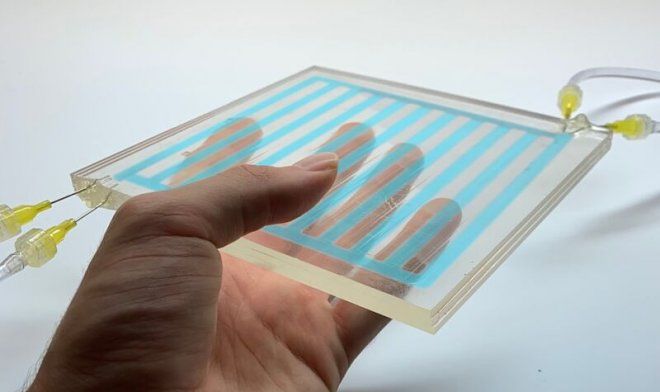“Liquid” windows will save an incredible amount of energy in large buildings
"Liquid" windows will save an incredible amount of energy in large buildings
The larger the buildings, the more money is needed to provide them with heat and light. It also costs a lot of money to maintain air conditioning systems. According to scientists from the University of Toronto, in the future it will be possible to reduce these costs through the use of “smart” materials. They managed to develop a unique technology of “liquid” windows, which they were inspired by observations of wildlife.
The Canadian researchers began thinking about the creation of innovative optical systems after they examined in detail the mechanism of color and skin tone changes in certain species of living creatures. It turned out that over millions of years of evolution, octopuses and crabs “learned” to scatter and collect pigment granules, thus controlling the color of their outer covers. A similar principle was used by the team in optical systems, which can be a good solution for energy conservation and indoor comfort.
The team developed an optical system made of layers of glass with thin channels for fluid transfer. By adding special particles and pigments to it, the properties of its transparency can be controlled. For example, only visible light can enter and infrared waves can be delayed. Such a solution will reduce cooling and lighting costs in summer, and in winter the system can be adjusted so that heat waves penetrate through the window as well.
Scientists point out that several layers with different properties can be combined in stacks to achieve greater efficiency. Preliminary computer simulations have found that just one layer, which provides infrared light control, yields 25% energy savings for room cooling. The second layer, which controls the intensity of the visible part of the light, brings the efficiency to a fantastic 50%. In the future, facades of buildings could be fully equipped with such optical systems – inexpensive and non-toxic materials can be selected for this purpose.
You may be interested: Biden did not answer questions about “spy balloon”
